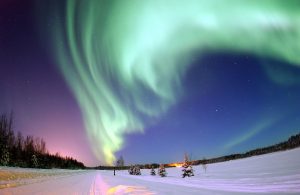I went to bed last night with the express intention of focusing all of today’s energy on the Johannes Kepler Wikipedia article. The article, which I re-wrote almost entirely from scratch and replaced the old version with in mid-December, and have been gradually improving with the help of others in the meantime, was nominated for Featured Article status by a passerby about a week ago. This slipped under my radar until just recently (as I was still recovering from qualifiers and working on my Wii Tennis skills to avoid mental exertion), but it garnered a lot of positive feedback… despite not being finished. I had planned to spend spring break working on it casually, for a final push toward featured quality (and completeness), but the Great Wikipedia Spirit had other plans.
Anyhow, I spend some time working out the language kinks after waking up in the mid-afternoon. Then I took a break and stopped by one of those interesting but rarely-visited (by me, at least) areas of Wikipedia, the Humanities Reference Desk. I gave my two cents on what a self-motivated student interested in art history should be reading, and the proverbial three hours of fascinated clicking later, I had found my way to an interesting topic that, horror of horrors, didn’t have a Wikipedia article! So now there is a short, unsourced article about the Hockney-Falco thesis, but still no discussion of the historiographical and philosophical legacy of Kepler. (Although, the Hockney-Falco thesis is only two degrees of Wikipedia from Kepler: the Hockney-Falco thesis is about optical aids to drawing like the (click-1) camera lucida, which was first described by (click-2) Johannes Kepler in Dioptrice… a fact I did not know before this evening, despite writing the Kepler article. Wiki works in mysterious ways.)
In other Wikipedia fun (as opposed to the Wikipedia work I ought to be doing to finish the Kepler article), I recently started a trend at Featured pictures candidates (where I learned, and am learning, everything I know about photography). Now a number of editors are demanding adequate extended captions for featured image candidates, and new nominations are starting to appear that take this into account. Hooray for context!
The FPC process on English Wikipedia is an interesting beast. As with Featured Articles, the standards for Featured Pictures have risen enormously over the last two years or so. And the way editors at FPC analyze pictures, and what they expect out of a good picture, is quite different than what a random viewer values in an image. The most dramatic example of this is the Picture of the Year on Wikimedia Commons. Commons has a separate featured picture process (which unlike on Wikipedia, does not take encyclopedicity into account), and it recently held a well-publicized vote for the best picture of the 321 that achieved featured status in 2006. The winner (below) was not yet an FP on Wikipedia, and its subsequent nomination only stood a chance of passing FPC (which it did not) in deference to its Picture of the Year status; it was widely criticized on both technical and aesthetic grounds.
